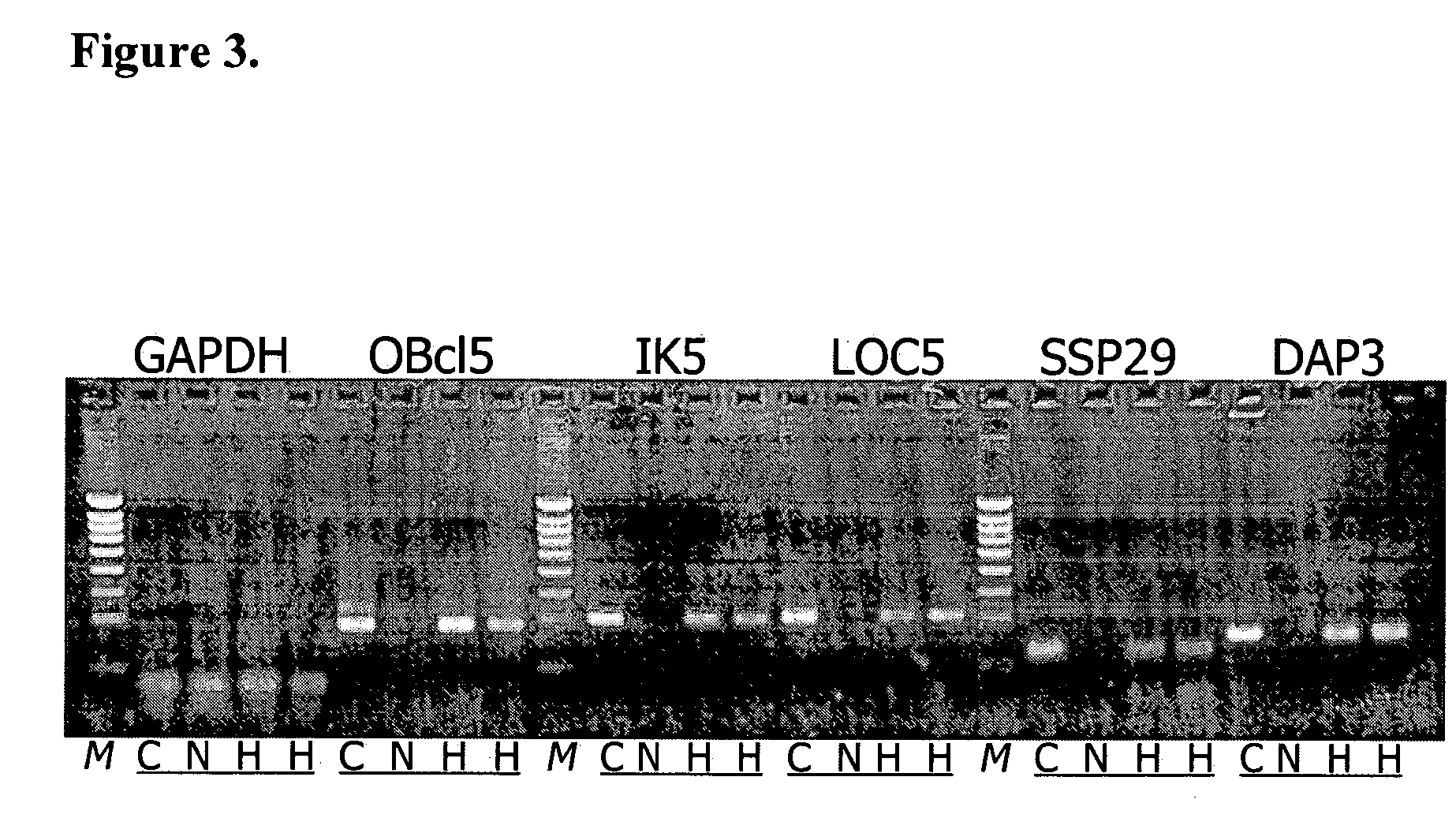Polypeptides and nucleic acids encoding these and their use for the prevention, diagnosis or treatment of liver disorders and epithelial cancer
a technology of polypeptides and nucleic acids, applied in the direction of fusion polypeptides, virus, dna/rna fragmentation, etc., can solve the problems of limiting therapeutic intervention options, hampered early diagnosis, and inability to detect early or non-invasively the disease,
- Summary
- Abstract
- Description
- Claims
- Application Information
AI Technical Summary
Benefits of technology
Problems solved by technology
Method used
Image
Examples
example 1
Preparation of HCC Subtracted cDNA Libraries
[0287] RNA is isolated from three pathologist-confirmed HCC tumor samples and from three pathologist-confirmed non-diseased human liver samples using the TRIZOL reagent (Invitrogen) according to standard methods (Chomczynski & Sacchi, 1987, Anal. Biochem. 162:156-159). The tissues used for the generation of cDNA libraries is from patients that provided specific informed consent for utilization of this material for research purposes, including commercial research. mRNA is converted to double stranded cDNA with reverse transcriptase and DNA polymerase as described in the instructions provided in the “PCR select cDNA subtraction kit” from Clontech Laboratories. To enrich for cDNAs specifically increased and decreased in HCC, cDNAs expressed in common and at similar levels in the reference liver pool and in HCC are removed by subtractive suppressive hybridization (SSH) according to the instructions provided in this kit and as described by Dia...
example 2
Preparation and Hybridization of HCC cDNA Microarrays
[0288] 1 ml cultures of the SSH cDNA library clones described above are established and the cDNA inserts amplified by PCR with primers specific to the vector sequence flanking the cDNA inserts. The M13 forward (5′-GTAAAACGACGGCCAG-3′; SEQ ID 20) and M13 reverse primers (5′-CAGGAAACAGCTATGAC-3′; SEQ ID 21) are employed for the PCR amplification of clone inserts. Fifty microliters of the bacterial cultures are heat denatured at 95° C. for 10 minutes, debris removed by centrifugation, and 2 μl of the supernatant included in a standard PCR [1× Amplitaq PCR buffer, 2.5 mM MgCl2, 37.5 nM each primer, 0.5 mM each of dATP, dCTP, dGTP and dTTP and 1.5 units Amplitaq DNA polymerase (Applied Biosystems)]. Reaction conditions are 95° C. for 5 minutes followed by 35 cycles of: 94° C. for 30 seconds, 60° C. for 30 seconds, 72° C. for 60 seconds; then followed by 72° C. for 7 minutes and then cooled to 4° C. Amplification of cDNA inserts is con...
example 3
Independent Verification of Differential Expression of the Nucleic Acids and Polypeptides According to the Invention
[0289] RNA is isolated from human patient samples as described in detail above. HCC samples for this analysis are not from the same patients as employed for production of the HCC SSH library or for cDNA microarray chip hybridization (see examples above, Tables 3A / 3B, 4 and FIG. 1). In addition to HCC samples, RNA is prepared from independent non-diseased liver samples to assess expression of the nucleic acids according to the invention in non-diseased liver tissue. Further, RNA is prepared from additional non-diseased and cancer tissues to assess expression of the nucleic acids according to the invention in other normal human tissues and other human cancers. 1 μg of RNA is converted to single-strand cDNA with the aid of Superscript reverse transcriptase (Invitrogen) in dATP, dCTP, dGTP, and dTTP (0.4 mM each), 7.5 nM random 6-nucleotide primer (hexamers), 10 mM dithio...
PUM
| Property | Measurement | Unit |
|---|---|---|
| Pressure | aaaaa | aaaaa |
| Pressure | aaaaa | aaaaa |
| Pressure | aaaaa | aaaaa |
Abstract
Description
Claims
Application Information
 Login to View More
Login to View More - R&D
- Intellectual Property
- Life Sciences
- Materials
- Tech Scout
- Unparalleled Data Quality
- Higher Quality Content
- 60% Fewer Hallucinations
Browse by: Latest US Patents, China's latest patents, Technical Efficacy Thesaurus, Application Domain, Technology Topic, Popular Technical Reports.
© 2025 PatSnap. All rights reserved.Legal|Privacy policy|Modern Slavery Act Transparency Statement|Sitemap|About US| Contact US: help@patsnap.com



